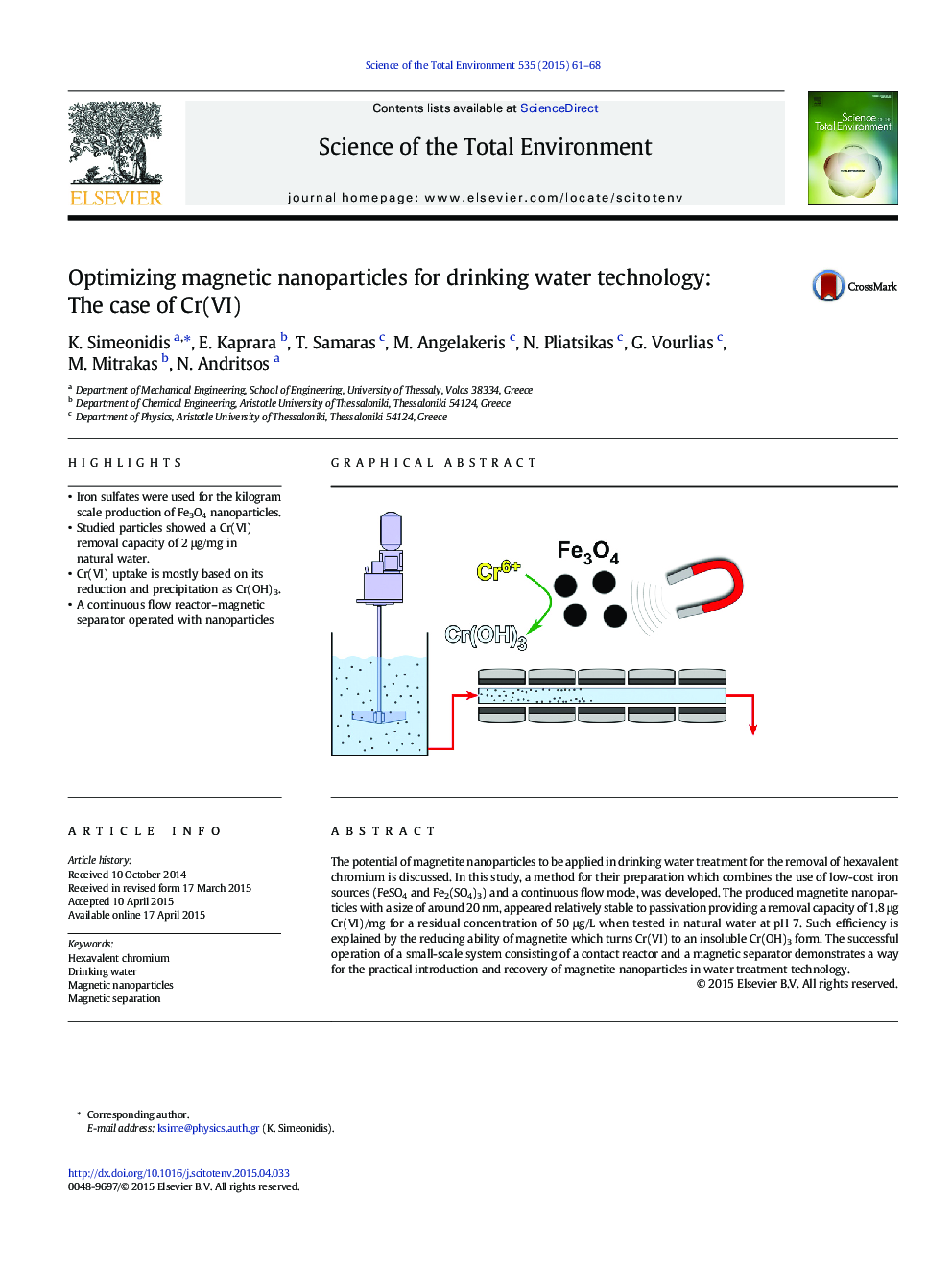| Article ID | Journal | Published Year | Pages | File Type |
|---|---|---|---|---|
| 6326151 | Science of The Total Environment | 2015 | 8 Pages |
â¢Iron sulfates were used for the kilogram scale production of Fe3O4 nanoparticles.â¢Studied particles showed a Cr(VI) removal capacity of 2 μg/mg in natural water.â¢Cr(VI) uptake is mostly based on its reduction and precipitation as Cr(OH)3.â¢A continuous flow reactor-magnetic separator operated with nanoparticles
The potential of magnetite nanoparticles to be applied in drinking water treatment for the removal of hexavalent chromium is discussed. In this study, a method for their preparation which combines the use of low-cost iron sources (FeSO4 and Fe2(SO4)3) and a continuous flow mode, was developed. The produced magnetite nanoparticles with a size of around 20 nm, appeared relatively stable to passivation providing a removal capacity of 1.8 μg Cr(VI)/mg for a residual concentration of 50 μg/L when tested in natural water at pH 7. Such efficiency is explained by the reducing ability of magnetite which turns Cr(VI) to an insoluble Cr(OH)3 form. The successful operation of a small-scale system consisting of a contact reactor and a magnetic separator demonstrates a way for the practical introduction and recovery of magnetite nanoparticles in water treatment technology.
Graphical abstractDownload full-size image
